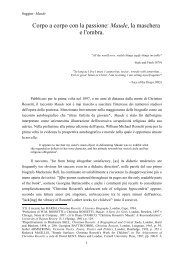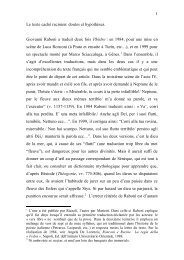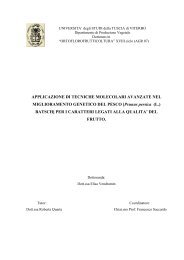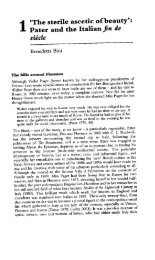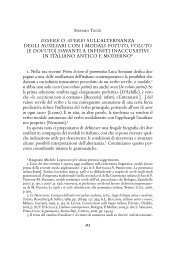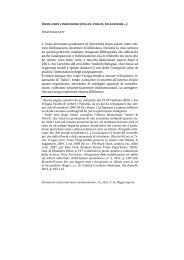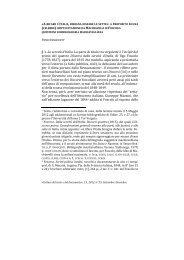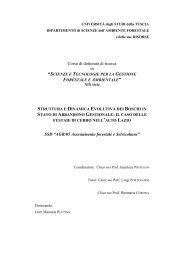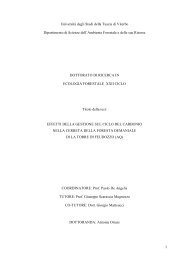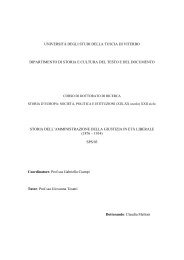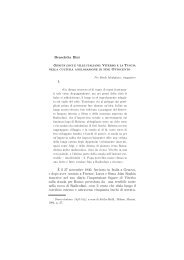drivers of soil respiration of root and microbial ... - Unitus DSpace
drivers of soil respiration of root and microbial ... - Unitus DSpace
drivers of soil respiration of root and microbial ... - Unitus DSpace
Create successful ePaper yourself
Turn your PDF publications into a flip-book with our unique Google optimized e-Paper software.
26<br />
Nitrate affected negatively the carbohydrate metabolism <strong>and</strong> energy economy <strong>of</strong> two plant<br />
species: in respect to ammonium, nitrate nutrition increased <strong>root</strong>-derived CO2 efflux up to<br />
50%;<br />
Carbon costs <strong>of</strong> nitrate reduction were higher for plant species which locate the nitrate<br />
reduction site preferably in <strong>root</strong>s.<br />
Root contribution to the whole plant nitrate reduction process is not stable during a plant<br />
ontogenesis <strong>and</strong> could be more important during the early phases <strong>of</strong> plant growth, following<br />
by a decrease in nitrate reduction in <strong>root</strong>s with time. These, consequently reduces C costs<br />
associated with nitrate reduction for more mature plants.<br />
The speed <strong>of</strong> C cycling through a single plant changes with growing stage. The earlier<br />
evolution <strong>of</strong> CO2 from the <strong>soil</strong> corresponded to the later growing stage <strong>of</strong> corn <strong>and</strong> lupine,<br />
meaning that growth stage could control the metabolic orientation <strong>of</strong> plants, influencing<br />
source (photosynthetically active leaves, which supply a new C) - sink (developing organs<br />
<strong>of</strong> plants, which compete for the new C) interactions, by this accelerating or slowing down<br />
the speed <strong>of</strong> C translocation to <strong>root</strong>s.<br />
All these should be taken into account while modelling <strong>and</strong> interpreting the data <strong>of</strong> CO2<br />
efflux from <strong>soil</strong>, particularly separating estimation <strong>of</strong> individual CO2 sources which contribute to<br />
the total <strong>soil</strong> CO2 efflux.<br />
Effect <strong>of</strong> defoliation management practices on <strong>root</strong> <strong>respiration</strong> <strong>and</strong> <strong>microbial</strong> activity (Chapter 4)<br />
To study the effect <strong>of</strong> mowing <strong>and</strong> grazing on <strong>soil</strong> <strong>respiration</strong> <strong>of</strong> different origin 5 fence<br />
areas, which prevent the inclosed plots from mowing <strong>and</strong> grazing, were installed in Amplero in<br />
2002. Plots for partitioning <strong>of</strong> <strong>soil</strong> <strong>respiration</strong> were established in managed <strong>and</strong> unmanaged <strong>soil</strong><br />
with further bimonthly measurements <strong>of</strong> <strong>respiration</strong> fluxes during the year 2006 <strong>and</strong> 2007. In 2006<br />
two <strong>soil</strong> sampling for further chemical <strong>and</strong> biochemical analyses were performed: just after the<br />
mowing <strong>and</strong> four months after the mowing. Grassl<strong>and</strong> management, based on plant defoliation<br />
appears to be a suitable management practice, influencing positively the below-ground food-web,<br />
<strong>and</strong> thus SOM transformation <strong>and</strong> nutrient cycling through increasing the quantity <strong>of</strong> easily<br />
available C substrates, shifting to more efficient <strong>microbial</strong> community with enhanced C use




